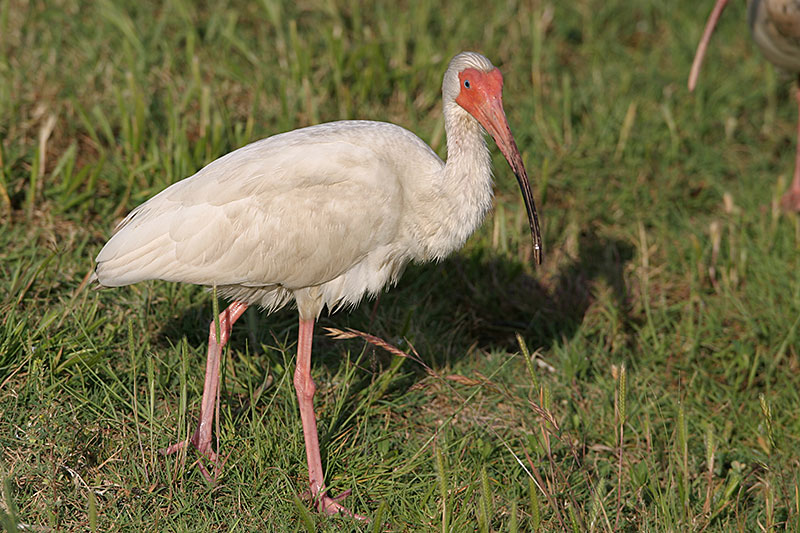
The United States is home to two species of ibises, which are long-legged wading birds found in wetland habitats: White Ibis and Glossy Ibis.
Both species of ibises are important indicators of the health of wetland ecosystems in the US, as they rely on these habitats for feeding, nesting, and breeding. However, both species face threats from habitat loss and degradation, as wetlands continue to be drained and developed for human use.
The White Ibis is considered a species of Least Concern by the International Union for Conservation of Nature (IUCN), while the Glossy Ibis is considered a species of Least Concern in North America, but is listed as Vulnerable globally due to population declines in other parts of its range.
So, let’s dive deeper and start with White Ibis
On this page
White Ibis
~23 inches / 2.2 lbs
White body (which can appear dirty), long, decurved bill and long legs make the White Ibis an easy identification.
Notice the matching colors of the bubble-gum pink legs and bill.

White Ibis. Photo © Sam Crowe
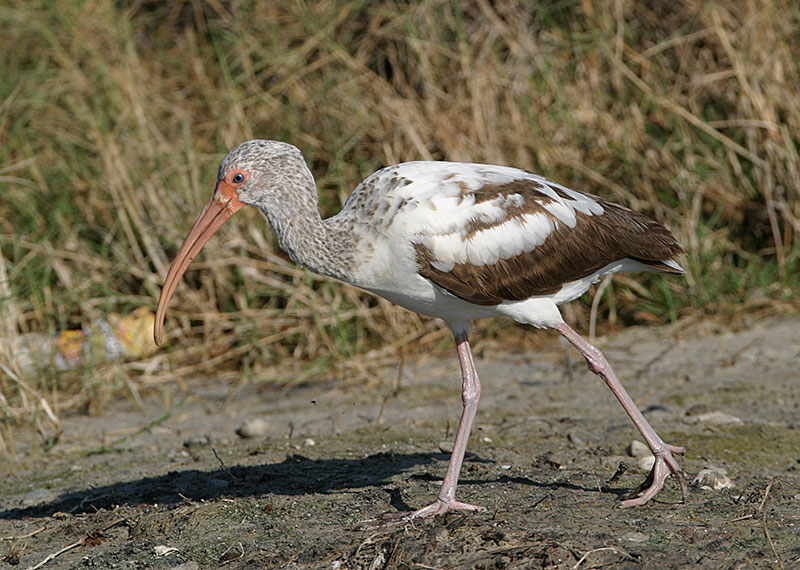
Young White Ibis have varying amounts of brown, more when younger, slowly molting to the completely white plumage. Photo © Sam Crowe
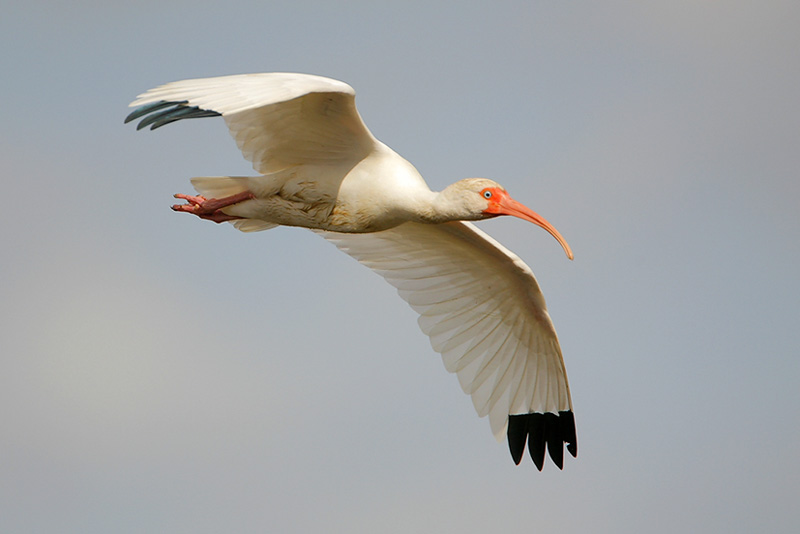
Note The Black wing tips are visible when the ibis is in flight. Photo © Greg Lavaty
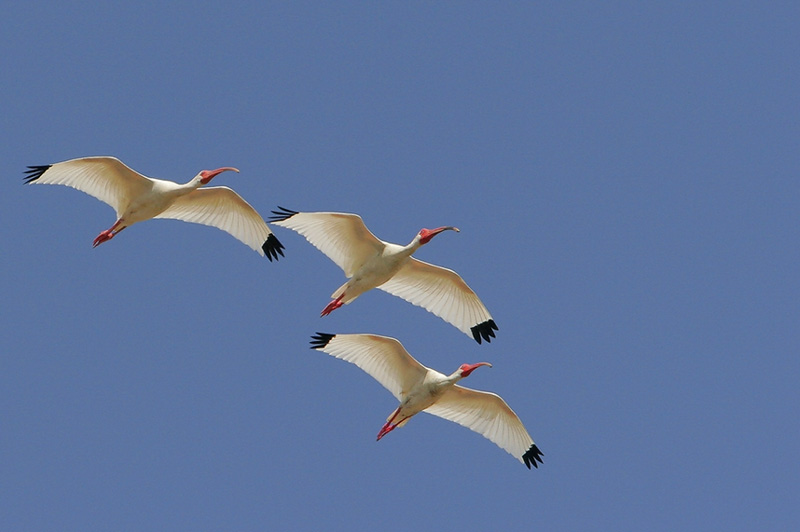
Do not confuse the white wings with black tips with the larger American White Pelican shown below. Photo © Greg Lavaty
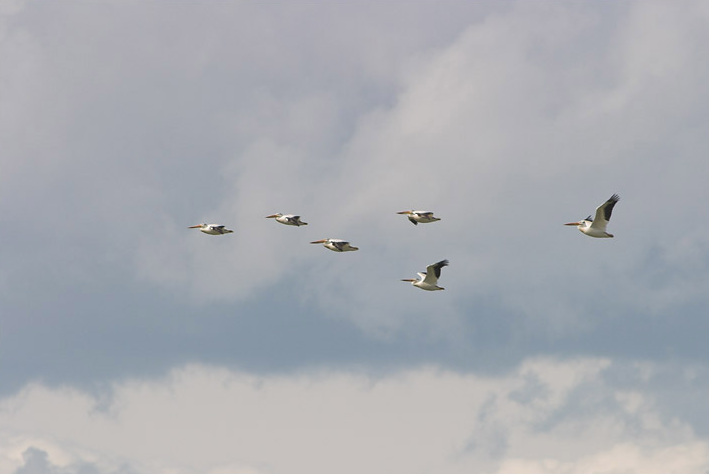
American White Pelicans. Photo © Greg Lavaty
Glossy and White-faced Ibis
These two species are very similar and offer a nice identification challenge. There is a limited amount of range overlap but both species can wander far out of their typical range, and the ranges are changing. For example, 30 years ago reports of the Glossy Ibis in Texas were generally not accepted by the Texas Birds Committee of the Texas Ornithological Society. The Glossy Ibis is now so common in parts of Texas that sightings are no longer considered of special interest. Glossy Ibis do wander further west on occassion, west to western Texas.
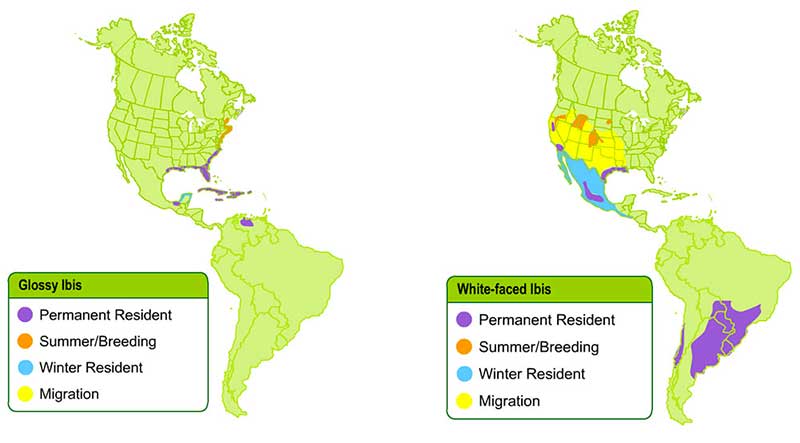
Accurate identification generally requires a combination of field marks. Color of the eye and face, when seen well, are the best field marks.
Breeding / Summer Plumage
Comparison of adults in breeding plumage – generally March through August.
Glossy Ibis
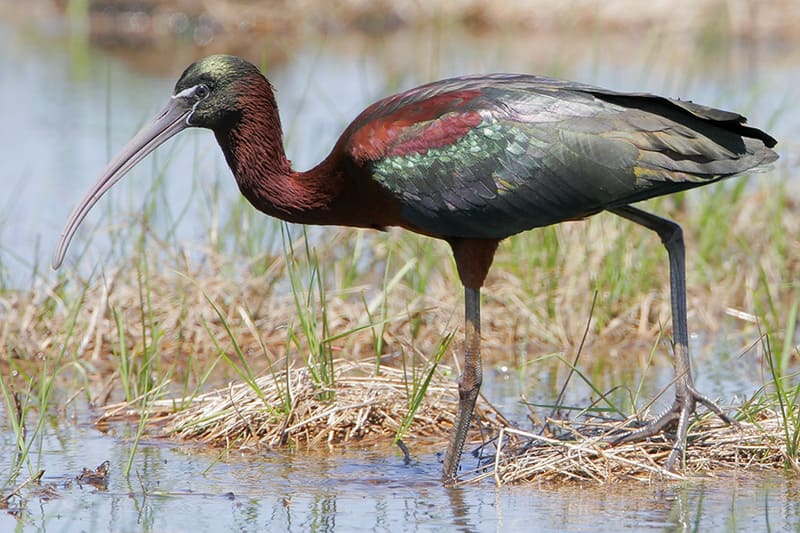
- Grayish bill, color apparently varies. The Sibley guide indicates the bill is brownish. The National Geographic Guide shows a yellowish bill. This photograph and other Glossy’s we have seen have a grayish bill.
- White outline around dark bill base, may not extend behind the eye.
- Dark eye
- Legs grayish to pale pink or red, often redder at the joints.
White-faced Ibis
The following two images are White-faced Ibis. The first image is from the Texas coast. The second photo was taken at Hagerman National Wildlife Refuge near the Texas-Oklahoma border.
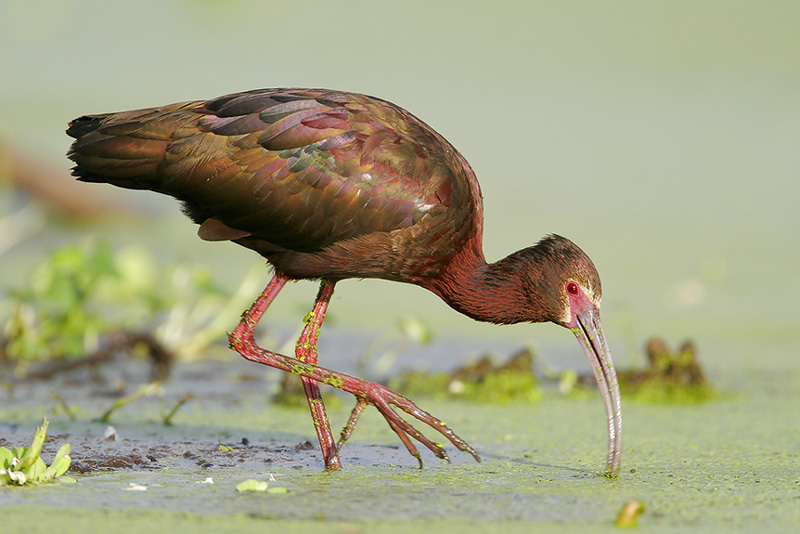
© Greg Lavaty
- Pale bill.
- White line surrounds red face, often extends behind the eye.
- Red eye
- Legs pink to red.
- While the side of this bird is reddish, White-faced body coloration can closely match the Glossy Ibis. See the second image.
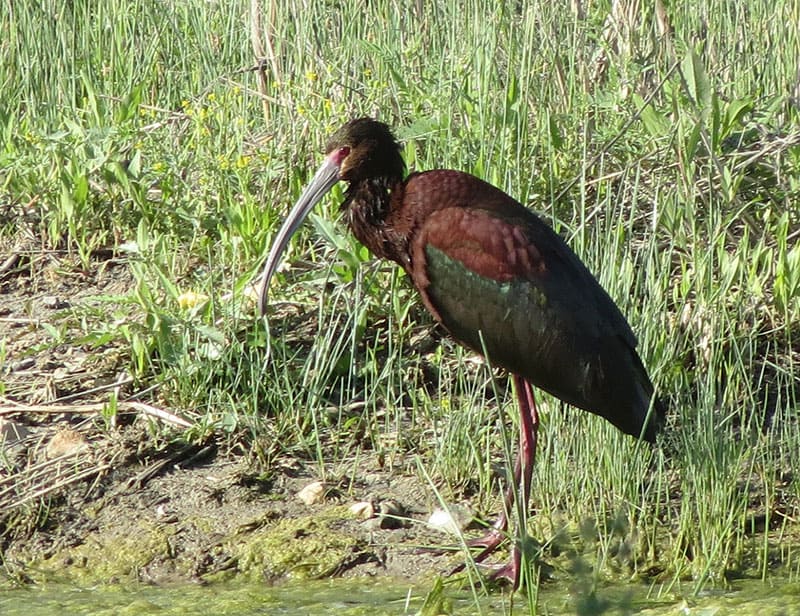
© Sam Crowe
Non-breeding Plumage (Generally September to February).
Glossy Ibis
It can be fairly easy to identify the fall Glossy Ibis by the dark or blue at the base of the bill, surrounded by a narrow white line that does not extend behind the eye. Distant birds or poor lighting can make identification difficult. Balance of photographs on this page © Greg Lavaty.
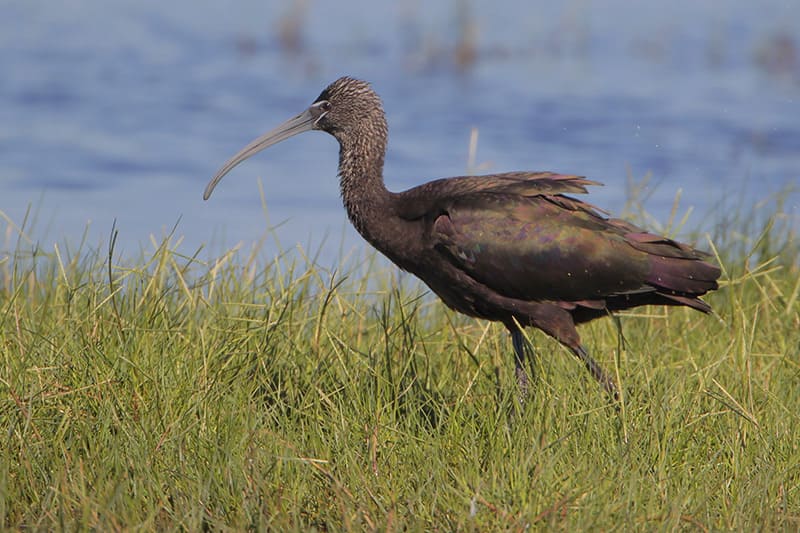
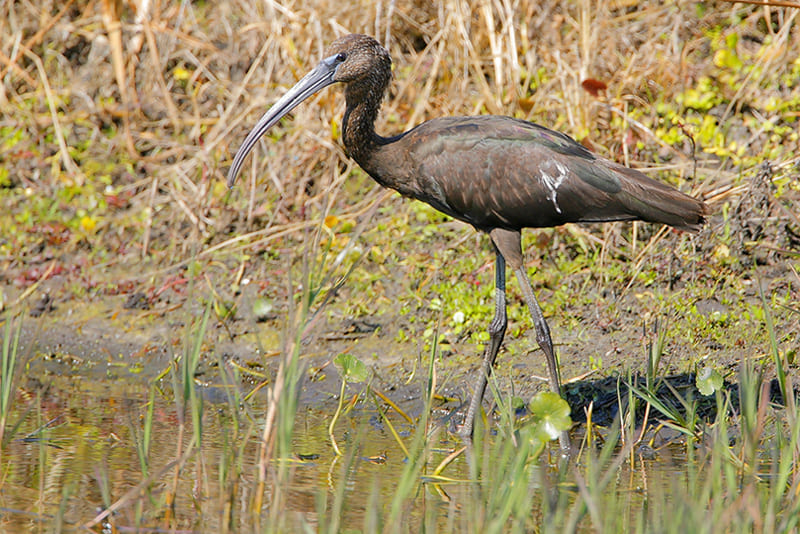
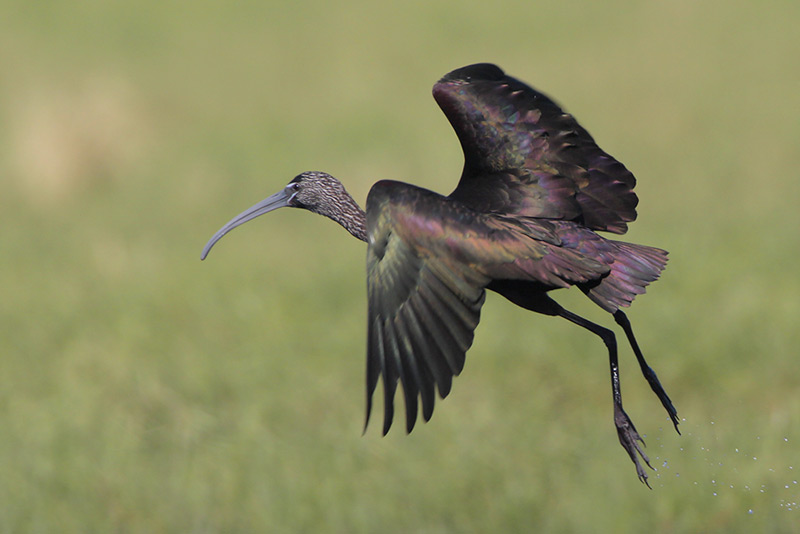
White-faced Ibis
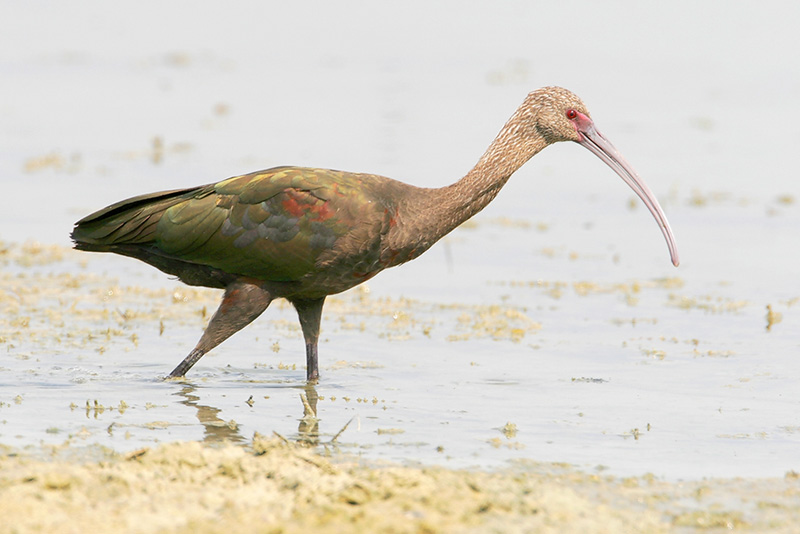
Note the red eye and red in front of the eye on this White-faced Ibis. This bird shows a hint of pink on an otherwise pale bill.
Note the white line around the eye of breeding-plumaged White-faced Ibis is not noticeable on this bird.
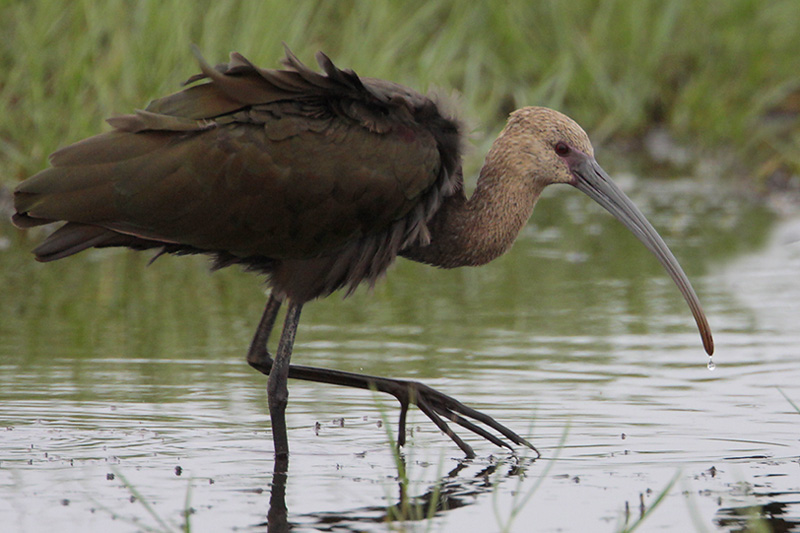
This bird might be a more difficult identification challenge.
The eye and the area just in front of the bill look like they may be turning red, indicative of the White-faced Ibis.
Note the legs look dark. The Sibley guide (first edition) shows dark legs on the juvenile and non-breeding White-faced Ibis as well as the Glossy Ibis.
On the other hand the National Geographic guide (Fifth Edition) shows pale legs on both species.
Ibis in Flight
Identifying distant or flying Glossy or White-faced Ibis may not be possible. Both of the following images are White-faced. The 2nd bird is fairly easy to identify in the photo, but it is a different situation when the bird is moving.
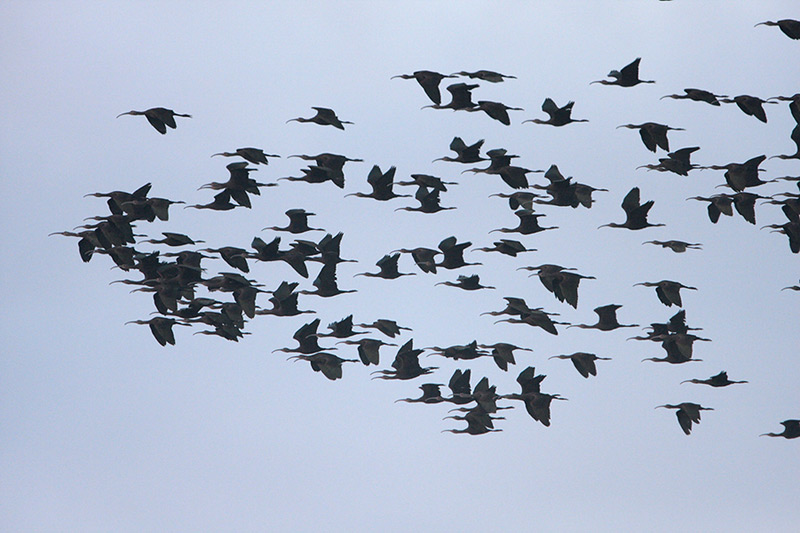
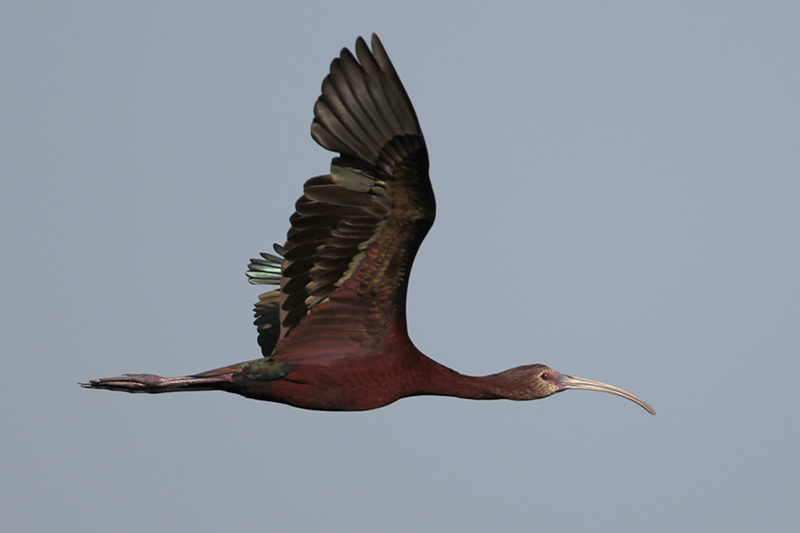


Homepage
Friday 15th of March 2024
... [Trackback]
[...] Read More Infos here: birdzilla.com/bird-identification/id-skill-development/bird-families/ibis-types/ [...]